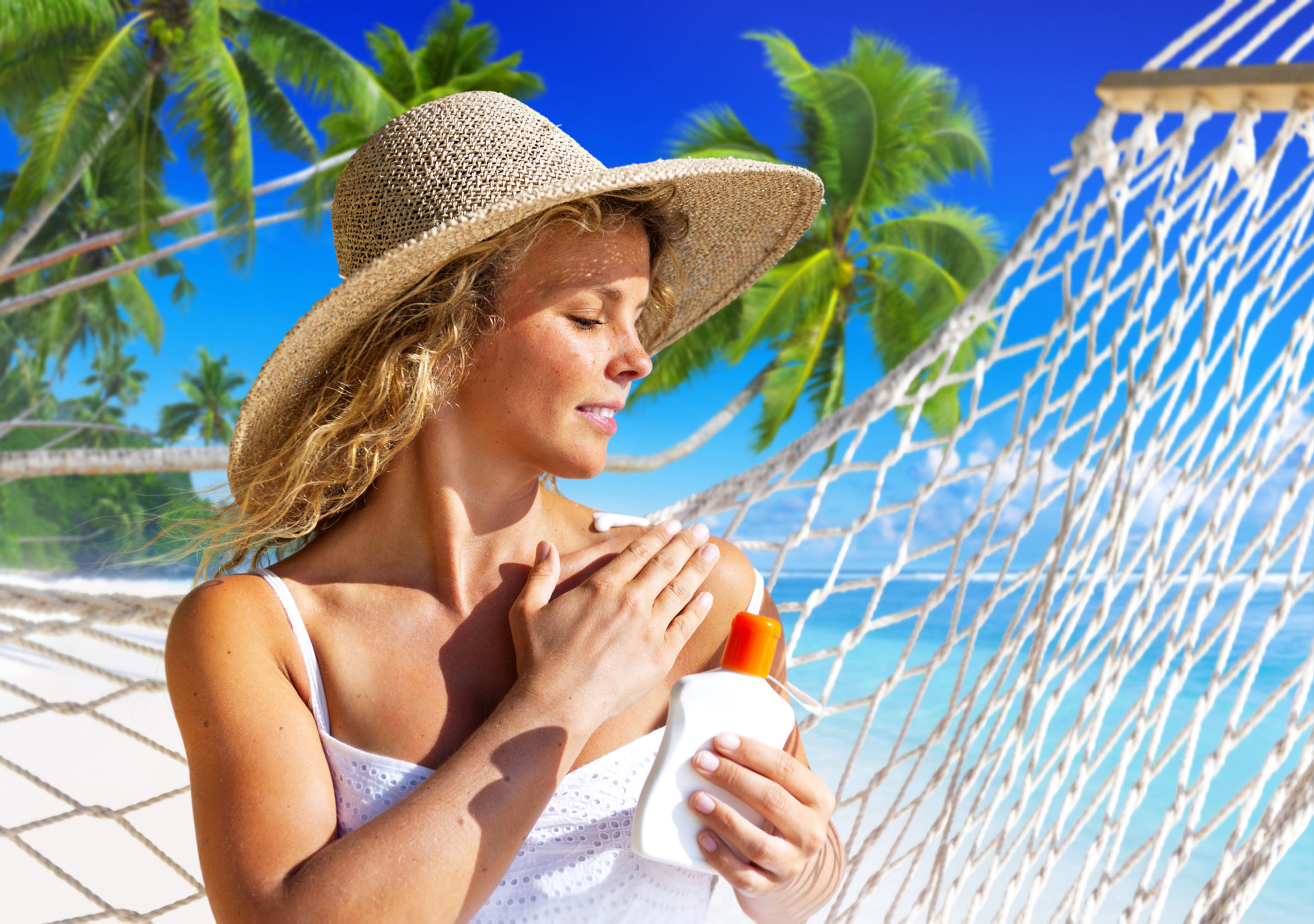The most important item in your skincare regime this summer? A suitable SPF. Katie Wright has all your suncare needs covered, whichever cosmetics you’re taking away with you on holiday, make sure you save space for sunscreen.
Not only is decent sun protection a crucial part of any beauty regime – to keep premature ageing at bay – it’s vital for your health. Yet, in a recent survey by the British Association of Dermatologists, a worrying 72% of people admitted they’ve been sunburnt in the last year, increasing their risk of skin cancer.
With such a vast array of sunscreens available, just trying to choose a sunblock is enough to give you a headache, then there’s the task of applying it adequately when you’re about to hit the beach.
So with holiday season fast approaching, we’re going back to basics, and looking ahead to the the latest innovations in suncare.
Get ready to slap it on with our foolproof SPF FAQ…
:: What’s the difference between UVA and UVB rays?
“Ultraviolet radiation is divided into UVA and UVB,” explains dermatologist Dr Hiva Fassihi. “UVB causes sunburn, and eventually skin cancers. UVA can penetrate deeper, and therefore mostly causes skin ageing, but has also been shown to increase the risk of skin cancer in the long-term.”
:: What SPF should you use on holiday?
“As a general rule, I recommend an added protection of at least 30+ SPF,” says dermatologist Dr Howard Murad, founder of Murad skincare. “However, SPF 15 gives you a 93% protection from the sun – there is no such thing as 100% – so for most people, this is adequate for everyday use, as long as you’re not spending the whole day out in the sun.”
:: How can you tell if a sun cream has adequate UVA protection?
“UVA is shown by either a star rating or simply a UVA inside a circle on the bottle. I would always recommend at least 3-star UVA protection,” says Dr Fassihi.
:: When and how often should you apply sun cream?
“Always apply sun protection to cool, clean, dry skin in the shade, ideally indoors, 15-30 minutes before you go into the sun,” says Abi Cleeve, managing director of Ultrasun UK. “Any application in direct sunlight increases evaporation before it’s had a chance to bond with the skin, reducing its power to protect.”
:: How much should you use?
“Apply liberally to all exposed, or potentially exposed, parts of the body,” says Cleeve. “As a rule of thumb, use a teaspoon of sunscreen for each arm, leg, front, back and face, including neck and ears.”
:: Are ‘once a day’ creams really effective?
Yes, because they have better ’photostability’, meaning that once absorbed, the protection isn’t depleted by the sun, nor can it be rubbed off or dissolved by water. “Ultrasun uses patented liposome technology, which provides a capsule for the UV filters to reach the deeper layers of the skin’s surface,” Cleeve explains.
:: Does sun cream have a use-by date?
Yes, it’s important to remember that the power of sunscreen decreases over time, so look for the little opened pot symbol on the bottle. Most indicate a nine or 12-month expiry date, so never use the same sun cream two summers in a row.
:: Do children need extra protection?
“Protecting kids properly in the sun is key to preventing the damage that causes issues in the future,” says Cleeve. “According to Cancer Research UK, a history of sunburn doubles the risk of malignant melanoma and also increases the risk of non-melanoma skin cancer, so children need broad spectrum UVA and UVB protection at all times.”
:: What about infrared protection, is that necessary too?
Infrared is the latest buzzword in suncare, with Ladival the first brand in the UK to offer protection from infrared radiation. “Recent research has shown there is a greater threat than we were previously aware of. We now know that infrared can damage skin and cause ageing particularly, so look for this too, for better all-round protection,” advises dermatologist Justine Hexall.
